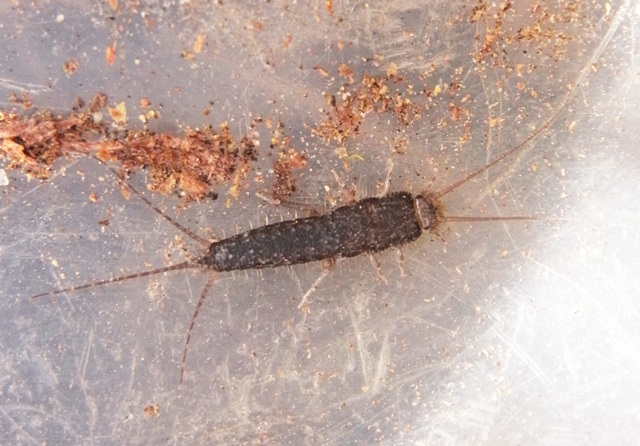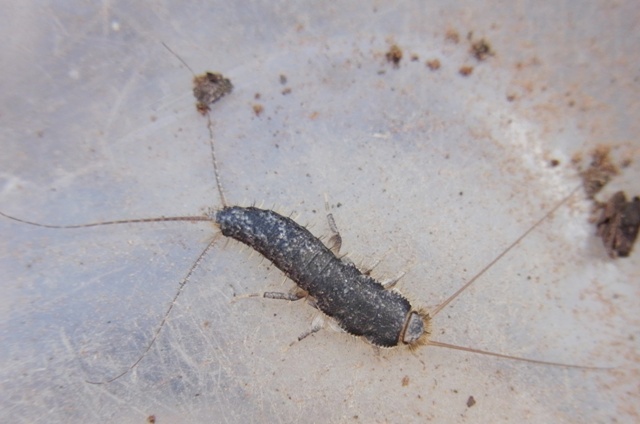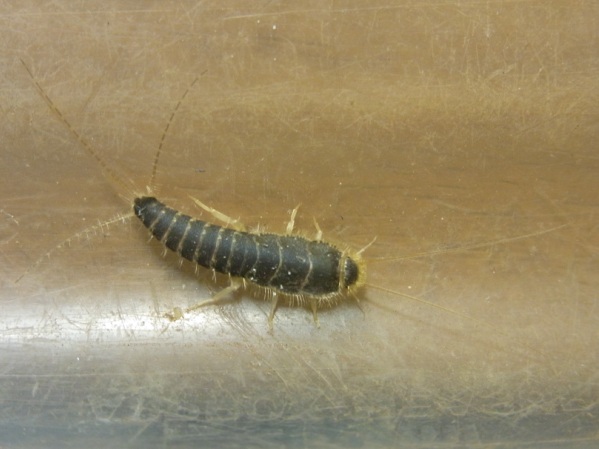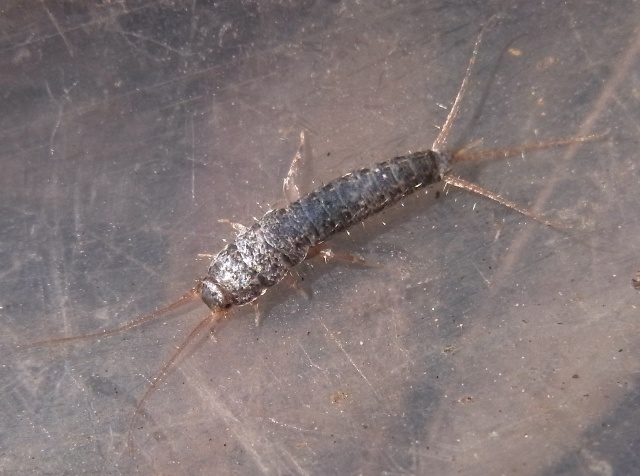Key to Australian Freshwater and Terrestrial Invertebrates
Phylum Arthropoda
Subphylum Hexapoda
Class Insecta
Order Zygentoma (=Thysanura)
Common name: silverfish
Overview
Silverfish resemble bristletails (Archaeognatha), being small, elongate, wingless hexapods. Unlike bristletails, they have 5-segmented maxillary palps and the eyes (if present) do not meet the middle of the head. They have long, many-segmented antennae and three long abdominal cerci of similar length, the outer two of which point away from the body. Also unlike bristletails, when disturbed they rapidly run rather than jumping. Silverfish are usually less than 2 cm in length and are covered with silvery-grey scales. Several cosmopolitan species have become common inhabitants of human dwellings and are often found in dark, sheltered areas around houses.
Distribution and diversity
Silverfish are widely distributed in most regions of the world. Globally around 370 species are described. They are found in most regions of Australia. Thirty-six species are known in 14 genera and two families; estimates are given of around 40 species in total.
Life cycle
Silverfish can exhibit parthenogenesis. However, reproduction is generally sexual and transfer of sperm is indirect. Most silverfish reproduce sexually: the male deposits a sperm packet on the substrate, and this is picked up by the female. The young develop over a series of moults and may take up to three months to reach maturity. The nymphs of silverfish resemble adults but are generally smaller in size. Unlike many other insects (but like bristletails) adults continue to moult throughout their life, which can be up to four years in duration.
Feeding
Most native silverfish are nocturnal herbivores that feed on a variety of plant matter and fungi. Some species are omnivorous, feeding on both plant material and scavenging on dead arthropods. Those species that have become common household pests feed predominantly on paper, glue and fibres.
Ecology
Silverfish are found in a wide variety of habitats including under the bark of trees, under rocks, in rotten logs and leaf litter. Some species have been found to live exclusively in caves while others inhabit the nests of ants and termites. Most species found in homes are introduced, cosmopolitan species that usually dwell in dark, rarely disturbed places such as cupboards and bookshelves. Silverfish are typically nocturnal and if active during the day are generally found in dark places.
Life cycle
Feeding
Ecology
References and further information
Atlas of Living Australia: Zygentoma
Encyclopedia of Life: Zygentoma
Tree of Life: Thysanura
CSIRO Entomology � Thysanura











